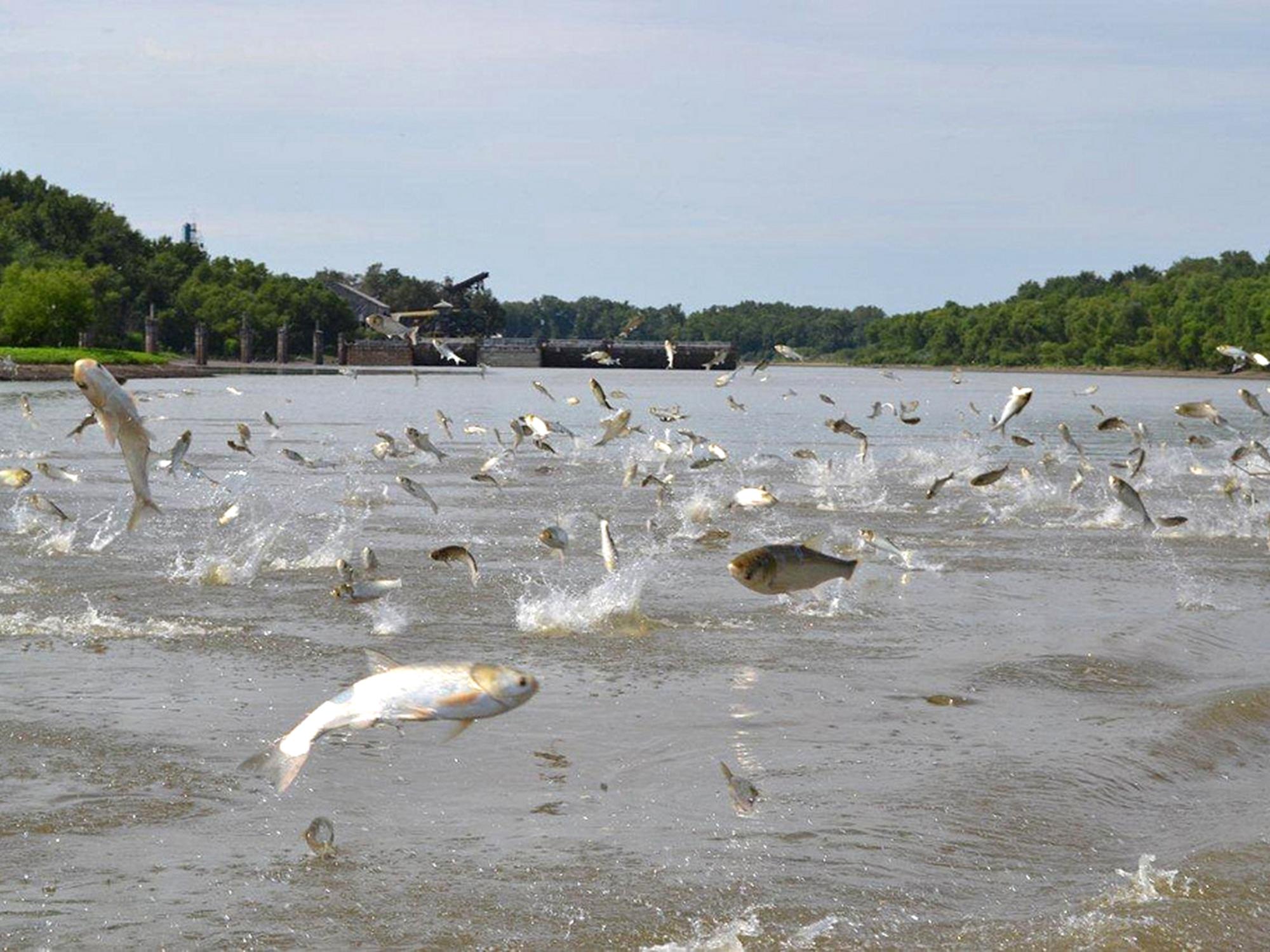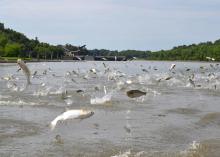Information Possibly Outdated
The information presented on this page was originally released on June 12, 2015. It may not be outdated, but please search our site for more current information. If you plan to quote or reference this information in a publication, please check with the Extension specialist or author before proceeding.
Extension Outdoors Asian carp: Where do we go from here?
STARKVILLE, Miss. -- Stories about Asian carp abound, but what exactly is an Asian carp and why should we be concerned?
Asian carp is a vague title assigned to a category of fishes native to Southeast Asia that have been introduced into the U.S. for their beneficial uses in aquaculture. This group of iconic fishes includes the common carp, grass carp, black carp, largescale silver carp, and silver and bighead carp. The species of most concern are the silver carp and the bighead carp, which I will refer to as “bigheaded carps.”
In the 1970s and early 1980s, bigheaded carps were introduced for the biological control of phytoplankton in water bodies with high nutrient levels. These species allowed aquaculture farmers to regulate the blooms of algae and water chemistry in their fishponds.
Soon after their introduction, silver carps were being raised and distributed at six state, federal and private facilities throughout the Southeast for biological control in ponds, sewage treatment lagoons and other manmade facilities, as well as for sale in the live-fish food industry. However, the containment of these fish proved dubious at best. They managed to escape confinement during periods of flooding and dispersed into rivers and other bodies of water. These carps now live in many rivers and streams of the Mississippi River Basin.
Bigheaded carps are ferocious planktivores. They feed aggressively and exclusively by filtering tiny crustaceans called plankton from the water. This feeding habit presents one of many problems, as several species of planktivores in our rivers and streams already depend on plankton throughout all their life stages.
Plankton are the foundation of most aquatic food webs, and all fish depend on them at some point, typically in the early life stages. Silver and bighead carps compete for plankton and can negatively affect all native fish, whether it’s the iconic paddlefish, the less popular gizzard shad, or bluegill, crappie, largemouth bass and other sport fish.
Essentially, the presence of bigheaded carps in our rivers and streams means less food for the native fish. Depriving these fish of the food they need for survival during critical growth stages could have negative impacts on outdoor recreation. Reducing the number of quality-size fish will degrade the recreational fishing experience and decrease the state’s angling opportunities. Recreational fishing is an industry that generates more than $500 million a year in Mississippi.
Not only do these invasive bigheaded carps endanger our native fish, but they also present a serious threat to humans. Silver carp, when stimulated or frightened by boat engines, are capable of leaping up to 10 feet out of the water and colliding with boats and passengers, potentially resulting in injury.
Silver carp may reach upwards of 45-50 pounds. When traveling at high speeds, they pose a significant threat to anglers and boaters. Documented injuries inflicted by silver carp have included broken bones, concussions, black eyes and bruises.
The silver carp’s close relative, the bighead carp, is more languid and does not typically jump from the water. This is a good thing, as they are capable of reaching more than 100 pounds.
The observed boat speed at which silver carp become less of a threat to boating traffic is about 30 mph. At this speed, boaters should be able outrun schools of silver carp.
As bigheaded carp populations continue to expand and increase throughout the Mississippi River Basin and the U.S., the frequency of encounters is sure to increase as well. Their environmental and economic impacts will likely escalate in the years to come.
Diverse teams of scientists and legislators need to educate and be educated about the situation so they can implement control and management strategies, as well as policy and legislation to help solve the problem, or at least slow it down.
Mayors, aldermen and other municipal leaders need to be aware so they can take action at the local level by keeping silver and bighead carp out of the rivers, streams and other bodies of water in their communities.
Everyone needs to acknowledge that you should never transport, relocate or release any Asian carp into a different body of water than where it was caught. We have many obstacles to face and things to learn before we are able to regulate this invasion, but we can all do our part in contributing to the solution instead of the problem.
Our natural resources are a critical currency, and we must do all that we can to ensure their protection and endurance.

Editor’s Note: Extension Outdoors is a column authored by several different experts in the Mississippi State University Extension Service.



